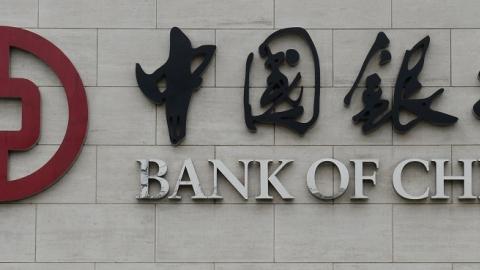The 40-basis point cut in the one-year benchmark lending rate by the People’s Bank of China last Friday caught the world by surprise.
It has also offered relief to some of Australia’s medium-sized miners in terms of their share price, even though the warnings of an oversupply of iron ore and slowing Chinese demand is still correct. The rate cut has also lifted the general economic mood in Australia as some investors hold on to the hope that China will once again save the Australian economy, not to mention the federal government’s hopes of a return to surplus over the next few years.
Australian miners and their investors are so dependent on the China boom that the PBoC’s desperate act is given a positive slant. This take is based on the assumption that the economic geniuses in Beijing will always be able to engineer rapid economic growth. Metal’s Andrew ‘Twiggy’ Forrest, one of the leading cheerleaders, in response to a question about the possibility of a structural Chinese slowdown told The Australian’s ‘Australia in the China Century’ conference in June 2014, that to “bet against China is the only guarantee of loss I’ve seen for a long time.”
However, if one examines more closely what the sudden move by the PBoC really means, you’ll discover that Twiggy and Co. ought not to be so sanguine about China saving Australia over and over again.
For starters, the sudden rate cut tells us that official Chinese growth figures presented to the world cannot be believed. I recently wrote about the methodological sophistry used by China’s National Bureau of Statistics to come up with official growth figures ("The Truth about China’s Lies and Statistics":http://hudson.org/research/10408-the-truth-about-china-s-lies-and-stati…, July 2014). According to the NBS, GDP growth in the first three quarters of 2014 has been around 7.4 per cent. Premier Li Keqiang’s own personal formula for measuring real growth (based on electricity consumption growth, freight growth and loan growth) tells us that growth has fallen below 3 per cent over this period.
The point is that if growth had really been humming along at 7.4 per cent up to September, would the PBoC be forced to introduce a sudden rate cut like it did last Friday? And if growth had plunged since the end of September so dramatically as to justify such a rate cut, do we really think no one would have noticed what would have been a very sudden halt in economic activity?
The much more plausible explanation is that the so-called ‘Keqiang Index’ had it right all along – 7.4 per cent growth never really occurred and Beijing is beginning to become very concerned. Indeed, the fact that the State Council -- the rubber stamp Parliament in China’s political system -- pledged to loosen the loan-to-deposit ratio which is currently limits loans to 75 per cent of deposits is further evidence that the rapidly slowing Chinese economy is starting to spook Beijing.
Then there is the dilemma of what’s good for Australian miners being bad for the reform process in China. We need to remember what reform of the Chinese economy is all about. Currently, a virtual state monopoly in the banking sector means that households are forced to deposit their savings in state-owned banks. Savers are offered very low deposit rates which reduce their return, while SOEs, which receive the lion share of bank loans, are offered very low loan rates to stimulate growth. The primary way such a system generates growth is through fixed-asset investment which has been a boon for our miners. As these loans to SOEs are generally rolled over and extended, or in some cases, written off by state banks, SOEs are incentivised to pour ever more capital into investment projects rather than focus on profit, or other commercial indicators such as efficiency of capital use.
The bottom line is that households are effectively subsidising the investment activity of SOEs. To ‘rebalance’ the economy, households need to start spending and SOEs need to reduce their level of investment. The need to ‘rebalance’ came about because there has been far too much credit growth. The Chinese capital-to-out put ratio is one of the worse in the world at 5.5:1, which mean that it takes a capital input of $5.50 to generate one dollar of additional output. Fifteen years ago, this ratio was at about 2:1. Private consumption as a proportion of GDP is now at less than 34 per cent, the lowest of any major economy in the world.
Yet, the cut in the benchmark interest rate is designed specifically to increase investment activity in the economy as the intended effect is to lower funding costs for the SOE dominated corporate sector. A further round of using national wealth to subsidise the SOE-dominated fixed investment sectors is particularly subversive of any so-called rebalancing of the economy. And without rebalancing, the much-hoped for explosion in the consumption habits of the Chinese middle-class, which is meant to drive the next few decades of growth in China, the region, including Australia, will fall far short of expectations.
This is just one rate cut and Beijing may yet truly embark on reforms that will rebalance its economy in favour of consumption and away from investment. However, this episode shows that Beijing still favours a high growth target (in this case 7.5 per cent) as its primary objective when it comes to economic management. When growth slows, the government appears to lack the political will and policy conviction to bear the short- and medium-term hits that are necessary for any such reform.
When Twiggy Forrest made his comment back in June, the iron ore price was still over $100 per tonne and it is now around $70 a tonne. He and others might still not ‘bet against China’ depending on what that actually means. But the interest rate cut of last week is not reassuring news. When the going gets a little tough, as any economic reform process will, China’s political leaders tend to blink such is the political dependency of the Chinese Communist Party on achieving rapid growth. And even then, ‘business as usual’ is still not going to bring us back to the good old days when iron ore soared well above $100 a tonne.














